People are fascinated and enthralled by birds. We humans can’t help but be inspired, if not a bit envious, by the legendary cry of the Common Loon, the vivid brilliance of the Scarlet Tanager, or the cheeky bravery of the Black-capped Chickadee.
It appears to be a terrific time to be a bird. Birds are now a part of the urban fabric and may be seen all over the city.
Toronto is a lovely city with parks, ravines, and waterways to be proud of. We conserve the animals and plants that utilize and require our green space by maintaining the different ecosystems found across the Greater Toronto Area (GTA).
According to Toronto.ca, there are 410 bird species in the Greater Toronto Area and 369 in Toronto.
Certain species are year-round inhabitants, while others will only remain for the winter or breed during the summer season, while some are migratory, traveling through in a matter of days on their route to nesting sites farther south or north to warmer wintering locations.
Regardless, they always need secure locations to hunt and rest, and we must assist them.
Cities may also be hazardous to birds. Domestic and wild animals frequent, reflecting glass in the house and workplace confuses and disorients them, and night lights confound and disorient them.
Toronto has emerged as a pioneer in bird-friendly development, with a number of fantastic initiatives aimed at raising public awareness of the issues and assisting birds in need of rescue, rehabilitation, and release.
Here are the most common birds in Toronto, Canada.
| Image | Name |
|---|---|
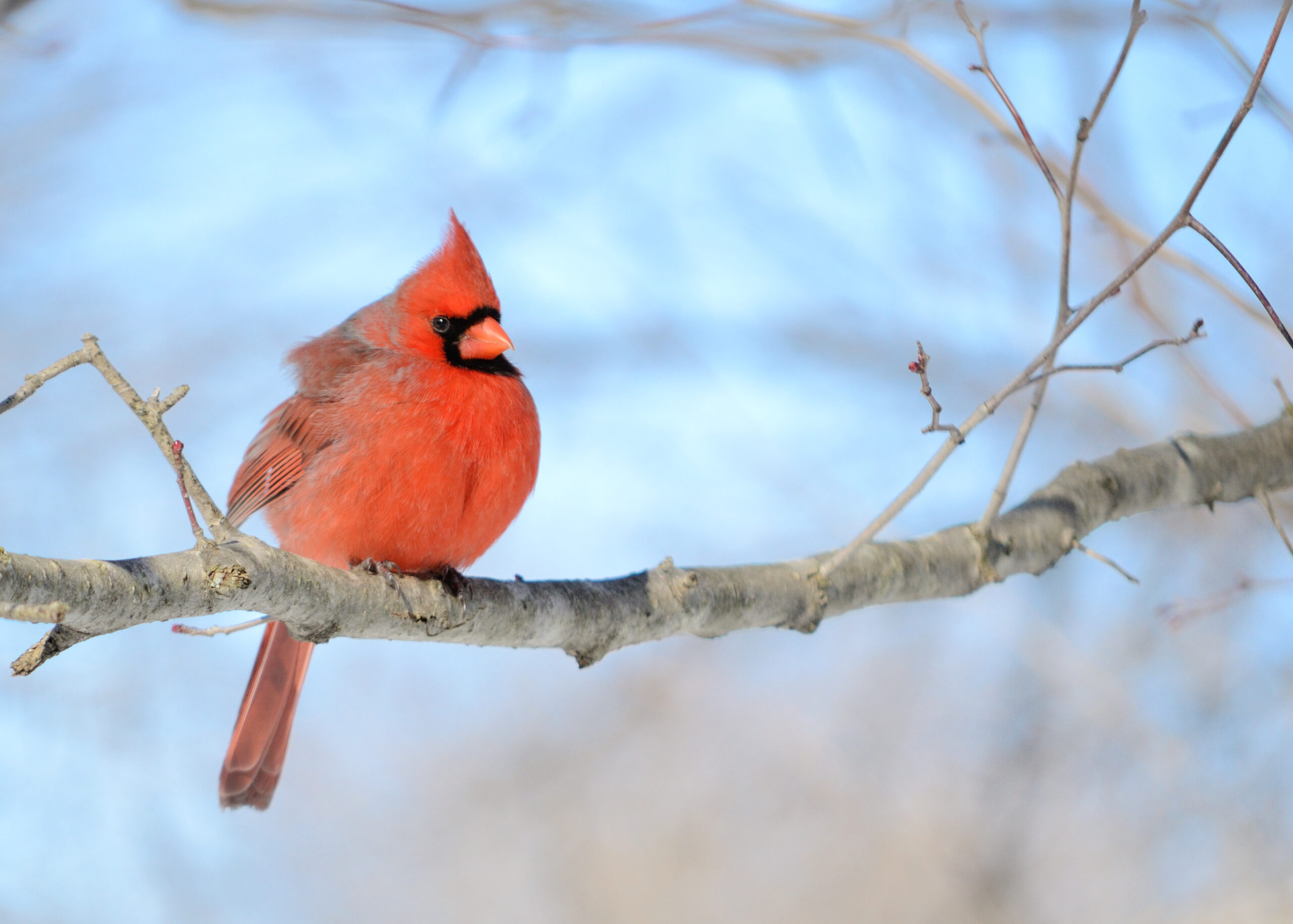 | Northern Cardinal (Cardinalis cardinalis) |
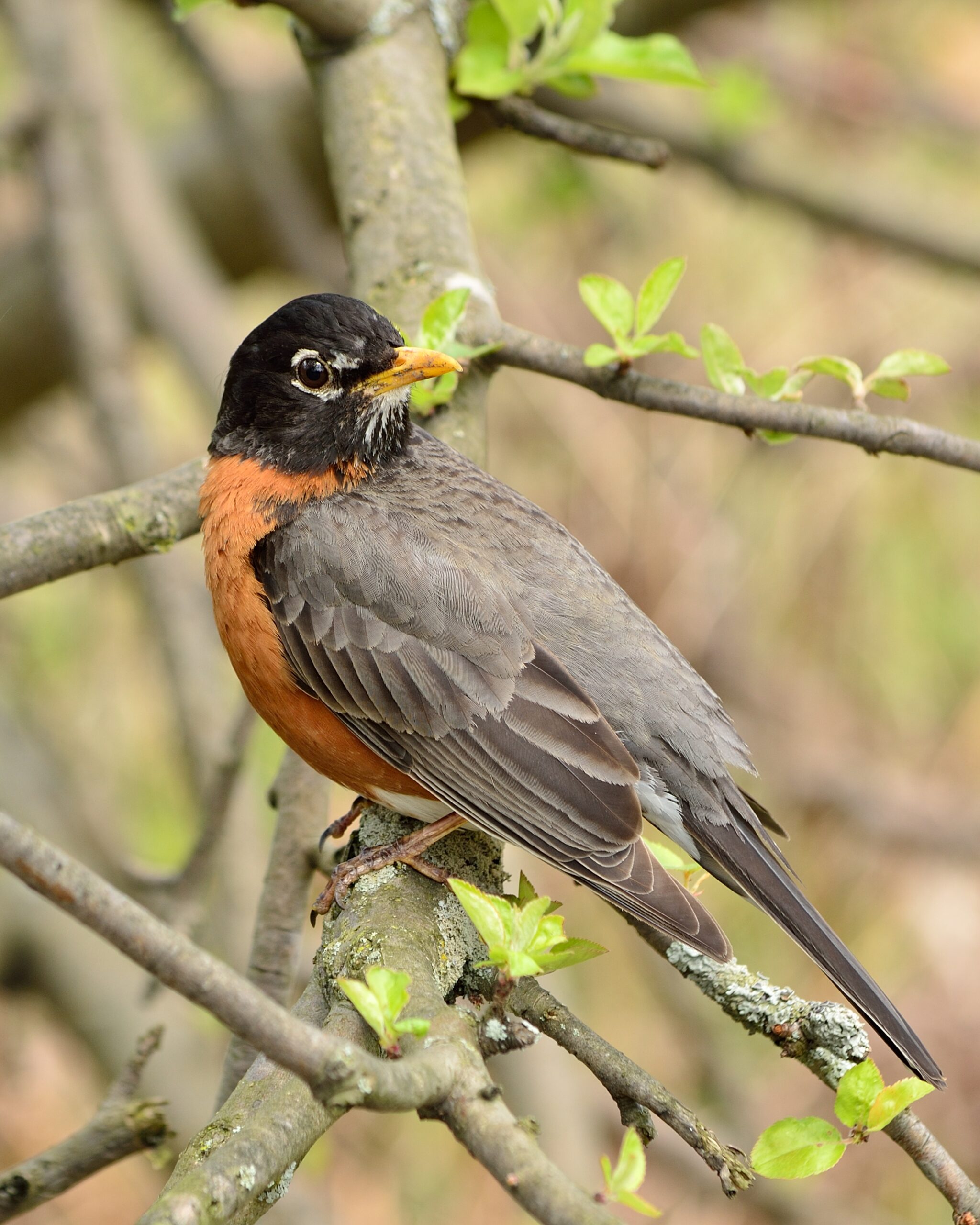 | American Robin |
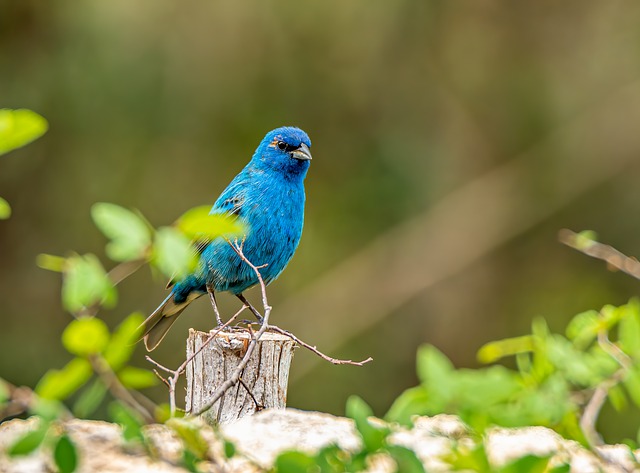 | Indigo Bunting |
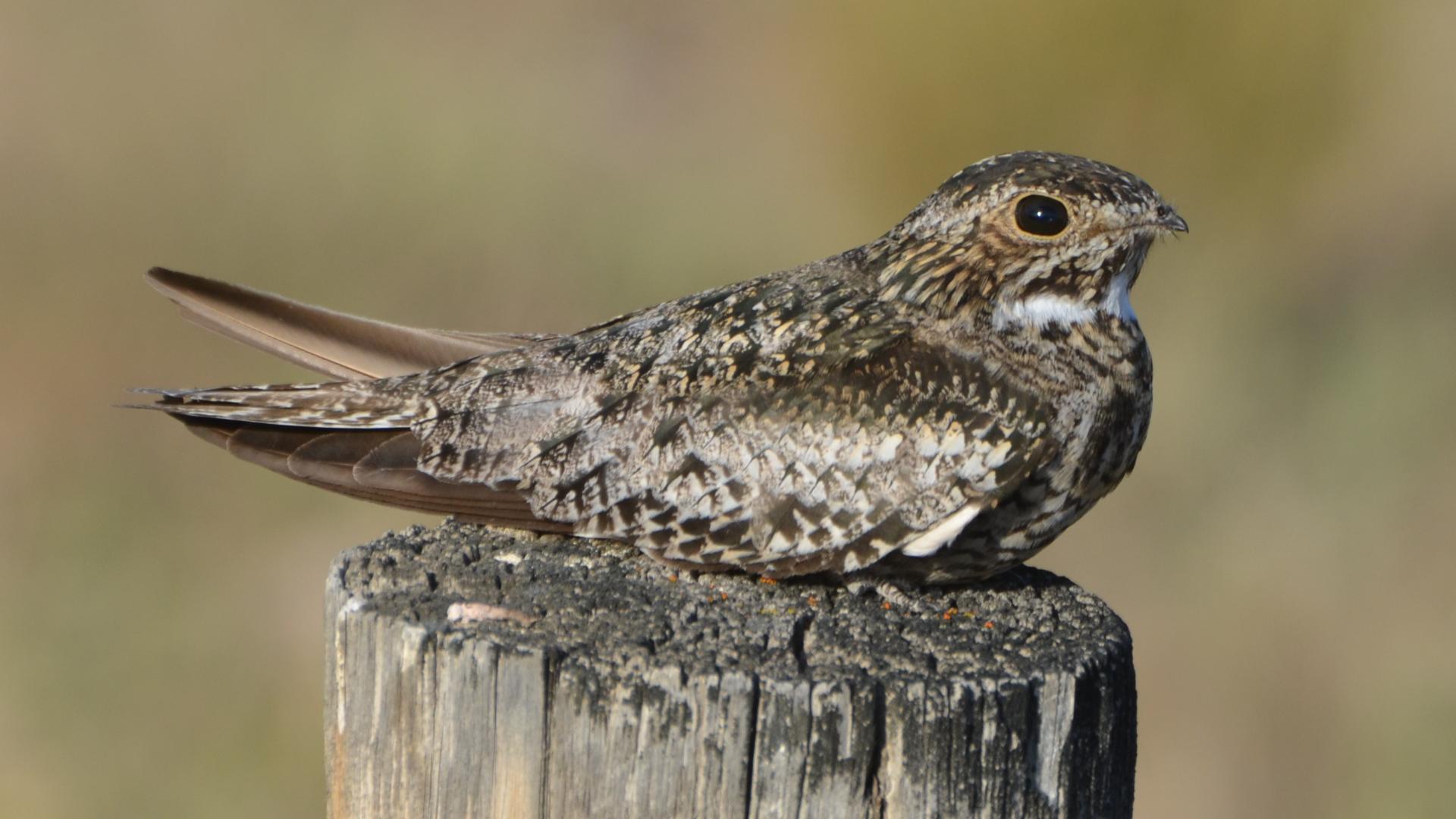 | Common Nighthawk |
 | Long-tailed Duck |
 | Black-Capped Chickadee |
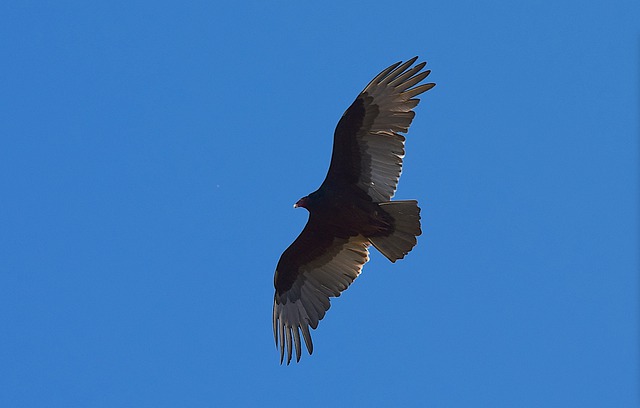 | Turkey Vulture |
 | Ruby-throated Hummingbird |
Most Common Birds in Toronto
1. Northern Cardinal (Cardinalis cardinalis)

Today, the Northern Cardinal is among the most frequent and widespread breeding birds throughout Toronto.
It was first observed here in 1900, and the first verified regional nesting of this previously more southern species took place in 1922.
It is now a year-round dweller, as at home among backyard trees, bushes, and vines as it is in the ravines and parks’ tangles and thickets.
The male is easily identified by its distinctive red plumage and beak, black face and bib, big crest, and loud whistling “cheer scream cheer” song.
The female has red wings, a beak, a tail, and a crest but is generally covered in buffy grey and brown plumage. Males start singing in late February on the first summer days, and couples nest from early April until late September.
Food
Although they are mostly seed eaters and frequent visitors to bird feeders, fruit and insects play a vital role in their diet during the late summer and autumn, when they need carotenoid pigments to replenish their brilliant red plumage during their molt season.
2. American Robin (Turdus migratorius)

For many people, the cheerful early morning singing of the American Robin heralds the arrival of spring. The American Robin may be spotted all year in Toronto, gathering on fruit trees in the winter.
It is a huge songbird with a chubby look that belongs to the thrush family. Males and females have identical appearances, with the exception that females have grey heads rather than blackheads and softer orange underparts.
During flying, the white tail tips are apparent. Females construct and care for cup-shaped nests consisting of mud, grass, and twigs. During the summer and spring, they hatch 3 to 5 pale blue eggs and may nest as many as three times.
Food
Robins consume insects and fruit and are often observed gazing/listening for insects on grasses or standing erect, unmoving, with one eye staring down.
3. Indigo Bunting (Passerina cyanea)

Male Indigo Buntings are among the most brilliantly gorgeous breeding birds across the Toronto region, although they are sometimes ignored by casual observers.
Indigo Buntings are little sparrow-sized songbirds that consume seeds for the most part of the year however switch to a high-protein food of bugs as well as other insects, mostly in summer. Males are a beautiful azure blue, whereas females are a dark brown.
They move at night, following the stars, and return to southern Ontario in late April and early May. Males develop territories fast, singing their bouncing, buzzy “sweet-sweet, chew-chew, sweet-sweet” song from open perches, bush tops, and telephone lines.
Habitat
They like a brushy, weedy environment and are often encountered on the outskirts of parkland and along rural highways. The female constructs nests low in shrubs and bushes and are completely responsible for egg incubation and nursing of the babies.
4. Common Nighthawk (Chordeiles minor)

The Common Nighthawk was originally a frequent breeding bird throughout Toronto, nesting on a number of the city’s older, gravel-roofed structures.
Long-time birders from this region are familiar with its booming courting displays and nasal “peent” sounds. The second Ontario Nesting Bird Atlas revealed a significant fall in populations in all atlas areas, excluding the Hudson Bay Lowland areas.
It has fallen significantly as a summer resident in our region over the past 20 years, most likely as a result of fewer appropriate roofs for nesting, increasing nest predators, and insect loss.
But besides its decline as a nesting bird, significant fall migratory pulses are consistently found in a narrow time frame during the last ten days of August (a record total of 1,129 was founded only in the north of High Park on 27 August 2001).
Both James H. Fleming 100 years ago and Charles Fothergill two hundred years ago reported such massive and magnificent late August flights. Common Nighthawks migrate from North America towards northern South America during the winter.
5. Long-tailed Duck (Clangula hyemalis)
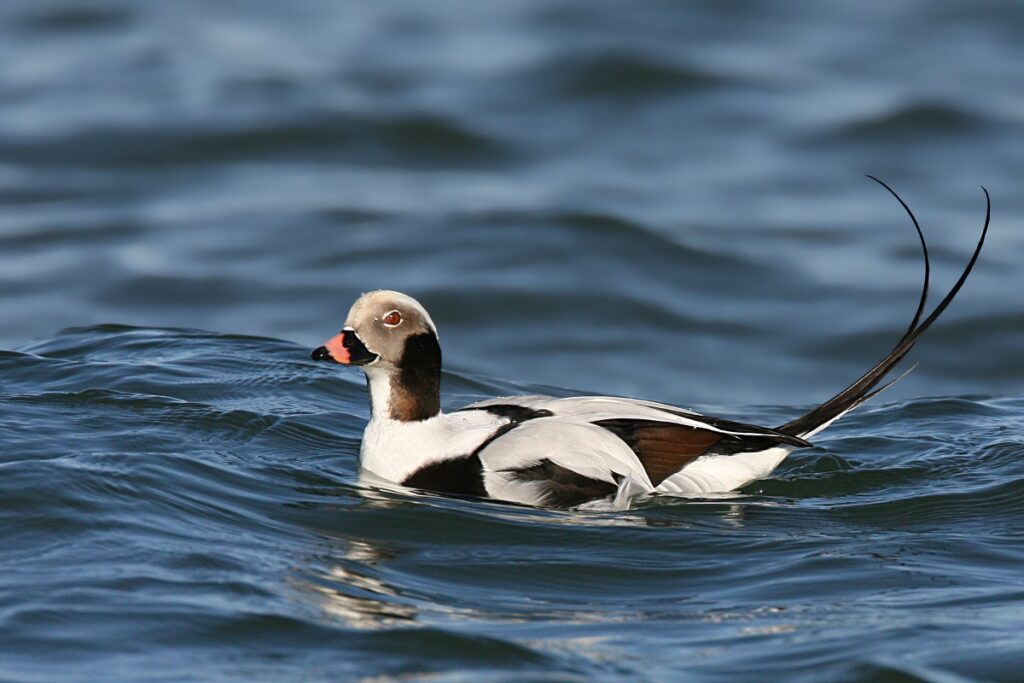
The lovely yodeling of vast flocks of wintering birds One of the most recognizable winter songs for the Toronto riverside is that of Long-tailed Ducks.
This Arctic nesting bird of aquatic tundra wetlands travels from Siberia, Ellesmere Island, and Greenland to spend the winter mostly on the Toronto waterfront.
From mid-October to mid-May, many hundred thousand Long-tailed Ducks winter across Lake Ontario; the Toronto area of the Mid-Winter Waterfowl Inventory has only recorded over 23,000 individuals.
Long-tailed Ducks spend enough time inside the water, diving down up to 60 meters for food, including crustaceans, insects, and fish. Their name is derived from the male’s exquisite long, central tail plumage.
6. Black-Capped Chickadee (Poecile atricapillus)
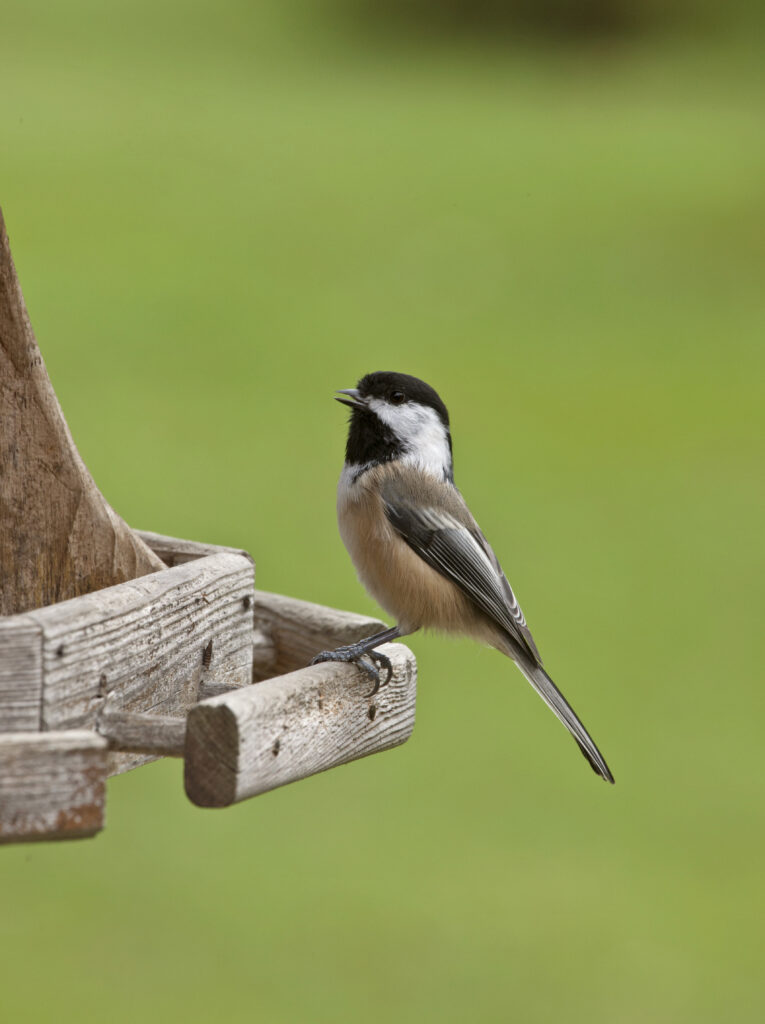
There is no greater bird ambassador than that of the Black-capped Chickadee! This charming, bold bundle of activity is a favorite across parklands and at backyard birdfeeders due to its inquisitive behavior.
Bring several sunflower seeds the next time you go for a winter stroll in your local park or ravine, wait till you hear “chickadee-dee-dee,” then put out a handful of seeds and prepare for the birds to come.
Chickadees live throughout the year in southern Ontario and across most of Canada. Males and females resemble one another, as do juvenile birds. Black-capped Chickadees are among the first species to nest, generally beginning in late April.
Habitat
They nest in cavities, mainly in dead trees, although they may sometimes utilize bird homes. Nests are built within cavities out of mosses, grasses, and twigs and are virtually always covered with animal hair and plant down.
A chickadee, despite its diminutive size, often hatch 6-to 8 eggs in a single brood.
7. Turkey Vulture (Cathartes aura)

Turkey Vultures began to return to Toronto in March. Most will pass through the city on their way to breeding grounds farther north, but others will remain and spend their summer hunting in the ravines and rural regions.
They’re simple to spot: giant black birds flying, teetering unevenly, and seldom swinging their wings in a “V.” Vultures may take advantage of the warm moist air soaring from hills, buildings, and escarpments by riding thermals.
They have a good sense of smell, which allows them to detect dead animals and carcasses along roadsides and buried beneath forest canopies. The adults’ bald, red heads distinguish them and assist them in keeping them clean when foraging.
At the Forest Park Hawk Monitor, “committees” of Turkey Vultures might well be spotted traveling south to spend the winter season throughout Florida, the Caribbean, and Georgia from early October.
8. Ruby-throated Hummingbird (Archilochus colubris)

Ruby-throated Hummingbirds may be tiny, but they’re a hardy little bird gram for gram. Hummingbirds, which weigh around 3.5 g (about the weight of a nickel), arrive in Toronto throughout late April after spending the winter across Central America.
Some even fly across the Gulf of Mexico as part of their journey. They are the only hummingbird that may be spotted in eastern North America on a regular basis. They eat nectar and tiny insects; however, they are frequently supported by hummingbird feeders.
Males create territories and conduct courting displays in the hopes of attracting one or more females. Females construct small nests out of plant down and adorn them with lichens linked together via spider webs.
They are also completely in charge of hatching the eggs and caring for the young. The eggs will incubate for 12 to 14 days, and the youngster will stay in the nest for nearly three weeks before flying out.
Conclusion
Bird watching is a fantastic experience since you may see so much in a single trip. The sight of a tiny baby bird or a nestling bird may be magnificent, but it is also rather pleasant to observe these animals in their natural surroundings.
Kitchener, Niagara Falls, Woodstock, Ontario, Toronto, Burlington, and North York are among the most famous bird-watching destinations. There are several bird species in these parks.
FAQ
What are Toronto's small brown birds?
House Wrens have a tiny, brown plumage. Their tail is short, their beak is small, and their wings and tail possess black barring. Males and females are identical in appearance.
How many birds can you count in Toronto?
We recorded 410 bird species throughout the GTA and 369 within Toronto.
Last Updated on March 22, 2023 by Lily Aldrin
